Whoooooo’s There?: The “Hauntings” of David Talbot Hall
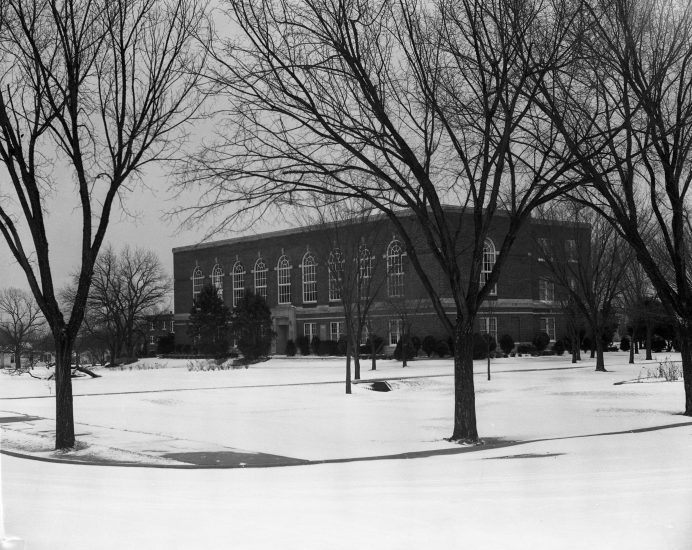
Part 2 of the Spooky Stories Series
On the farthest east side of campus stands David Talbot Hall. It's a fairly plain-looking building from the outside: red brick, rectangular in shape, uniform windows neatly lined up on all four sides. Inside, however, is a different story. The building is adorned with pillars, large winding staircases and even ornate chandeliers in some of the rooms. Many A&M-Commerce students have roamed Talbot's halls, sat in its classrooms or climbed its stairs (which feels like running a marathon). It's old and historical and fascinating, but many of us can't deny that, sometimes, David Talbot Hall can also feel a bit spooky.
As a graduate student in English and former graduate assistant teacher, I've spent countless hours in David Talbot Hall. I took night classes during my coursework, sometimes as late as 10:30 or 11 p.m. On those late nights, when the sun was long set, the hallways nearly empty, lights dim, I felt somewhat of an urge to rush out the door as quickly as possible.
I've always wondered: was my intuition telling me something about the old building? Or was it just a side effect of mixing an old building with my over-reactive imagination? I had heard whispers of possible ghosts, even tales of a paranormal investigation in the old building, but it was all rumors through the grapevine. So this year, in the spirit of Halloween, I decided to research David Talbot Hall myself. I wanted to learn if Talbot’s “hauntings” were just myths or possibly more. And I must admit: what I learned undoubtedly sent a few delightful chills down my spine!
The History
David Talbot Hall (or Talbot Hall, as it’s often called) hasn't always been the building that many of us know. It was built almost a century ago, in the 1920s, and was originally the university's library. The two-story building held tens of thousands of books, and featured luxurious chandeliers, a tiny local history museum, and a reading room with a lofty ceiling and a skylight to let in plenty of sunlight.
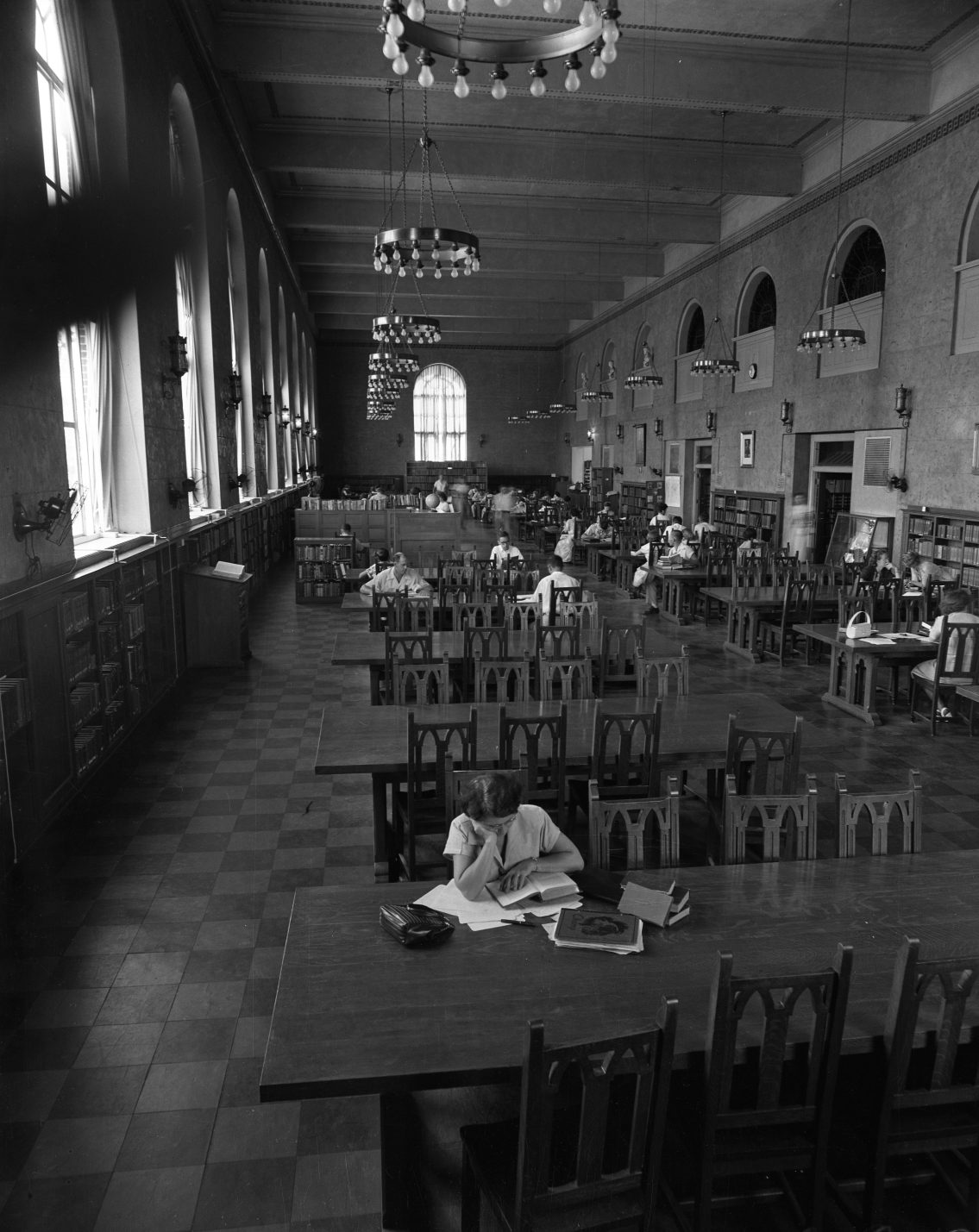
During the early 30s and 40s, the reading room was used as a study space and also held dances and social gatherings for students. Multiple sources recounted an old story about how the janitors hated the dances because the students would scuff up the tile floors while dancing. As a solution, the janitors put powdered wax on the floors before a party, and the students unknowingly did the work of buffing the floors as they danced.
In the 1950s, as the university's book collection grew, the need for a larger, more modern building grew with it. A new library (what is now Velma K Waters Library) was completed in 1959, and the books were relocated. It was decided that the old library building would be renovated and called “The Hall of Languages,” where the Department of English would reside.
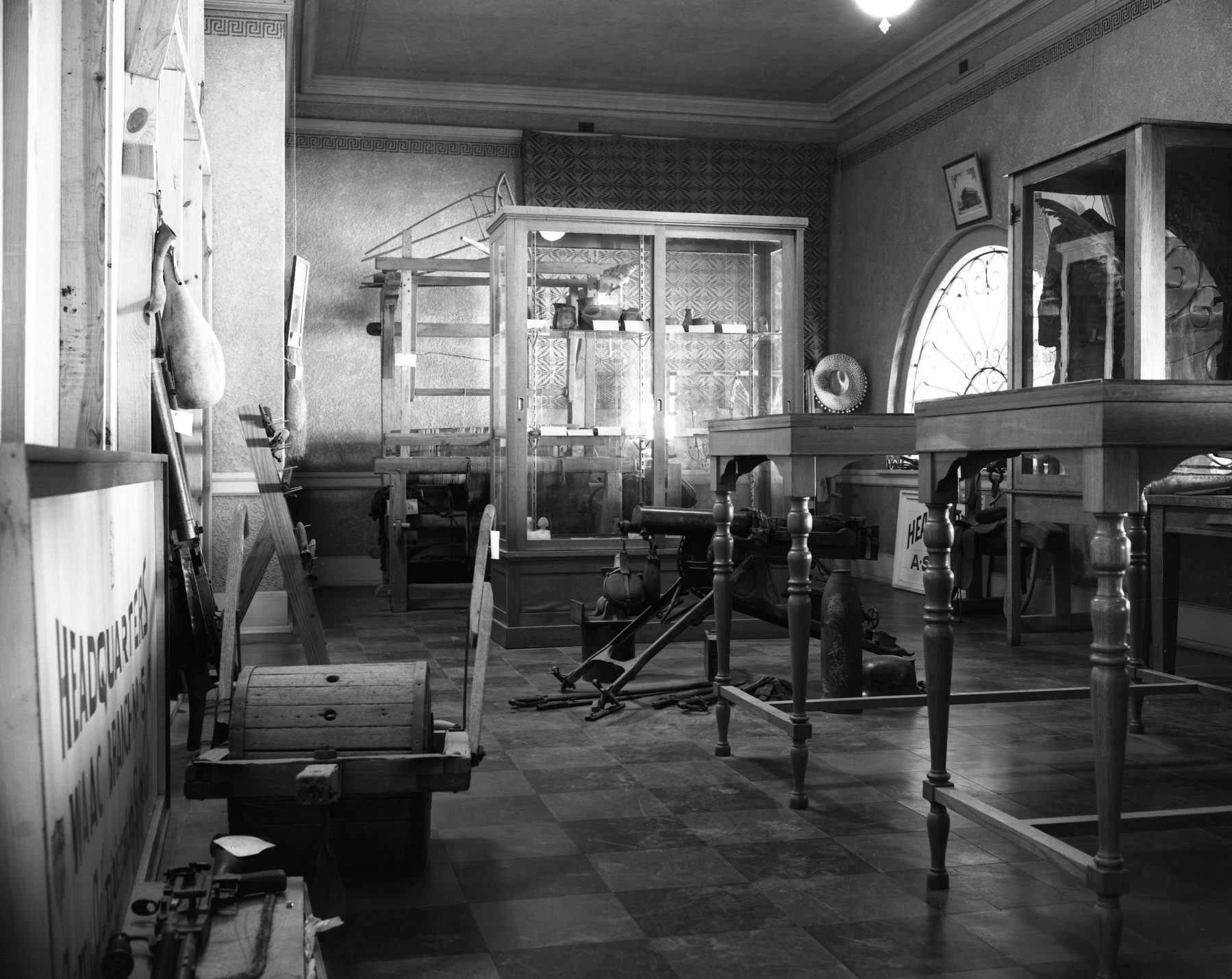
The reading room was split to create more classrooms, forming a new middle story between the first and second floors (which is supposedly why no public bathrooms are on the second floor). Dr. Hunter Hayes, department head for Literature and Languages, said the elevator was likely installed around this time.
The building sat largely untouched for decades until 2017 when the first floor was significantly remodeled. LED lights were installed to brighten the space, the walls (originally a dark brown) were repainted, the main office was expanded, and a new conference room was constructed. Along with these renovations, the building was renamed David Talbot Hall, honoring the university's first Black professor and his significant role in the history of A&M-Commerce.
The Building's Spooky Features
As an old building with such a rich history, it's not surprising that Talbot Hall sometimes feels uncanny.
“Any building around 100 years old, especially one with such a tremendous history, could give people weird vibes,” Hayes speculated.
Many have described the structure as “creepy” or “spooky” because of its natural age and some of its odd and dated features. For example, throughout the building, there are several tiny doors, about three feet tall and two feet wide, and no one seems to know exactly why they are there.
“We've always called them the ‘Hobbit doors,'” Hayes said laughing, “although it was probably more related to the dumbwaiter.”
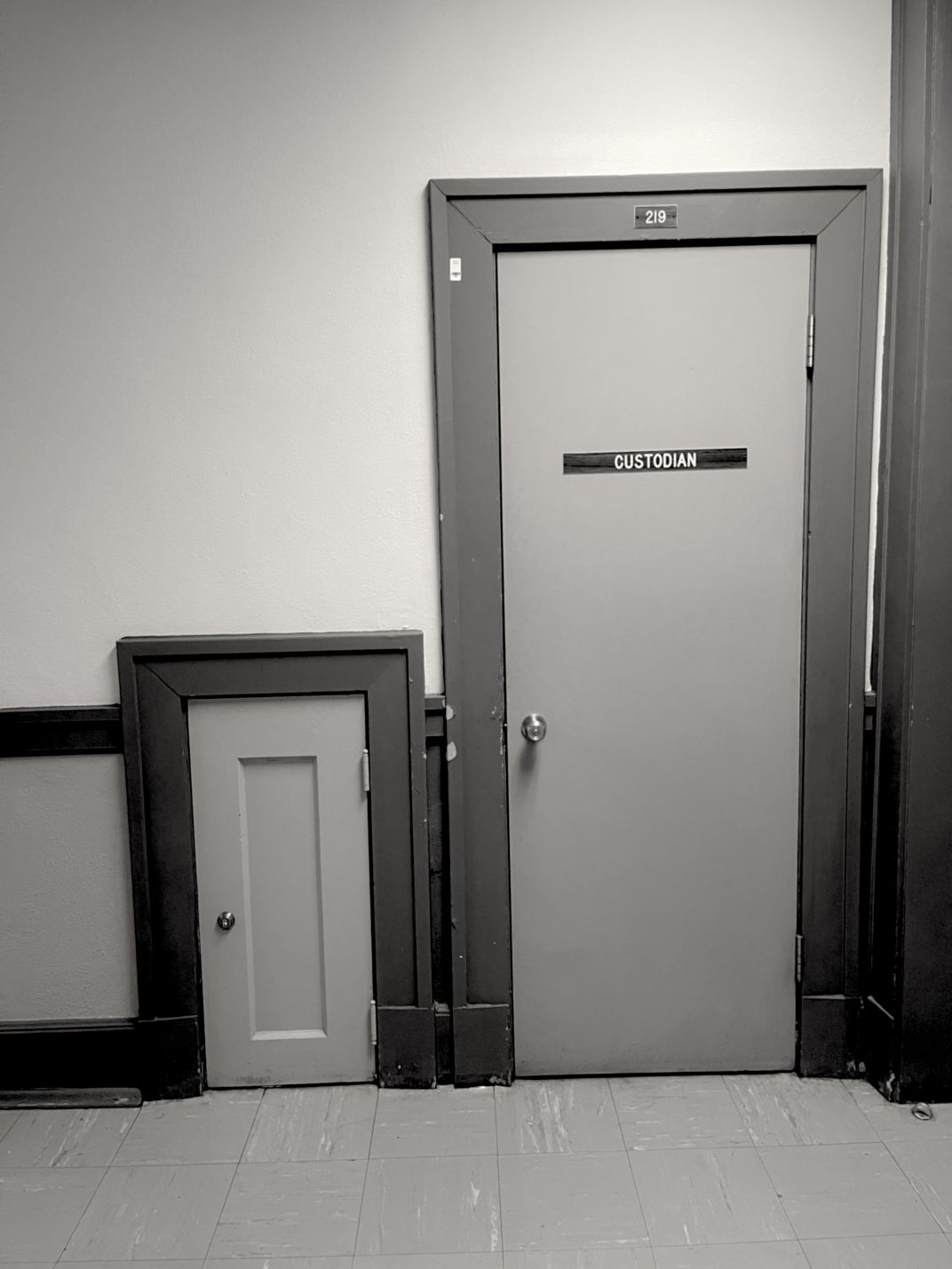
A dumbwaiter, Hayes explained, is a small elevator-like system operated by ropes and pulleys. He speculated that perhaps the original librarians used it to send books to the second floor instead of hauling heavy loads up and down the stairs.
Dr. Shannon Carter, who's worked in Talbot Hall as an English professor for over 20 years, said that the tiny doors aren't the only mysterious ones in the building.
“There's also a door in Room 202, and I swear, I didn't see that door until like two years ago, and I've been in that room so many times!” she exclaimed. “The weirdest thing was no one seemed to realize that door was there. And then, a few months ago, someone discovered their key worked for that door! It was a closet filled with things like old computer punch cards, old photo albums, old scantrons, and other weird and curious things.”
Another peculiar feature of the building is the elevator, which can occasionally have a mind of its own. Sometimes, when you step into the elevator and push the button for the floor you want to go, the doors will close halfway, then suddenly open again. Sometimes, it will take you to a different floor than you requested.
Carter shared that occasionally, when she works late at night, she brings her dog, Eddie, to keep her company. Eddie, she suggested, may sense something near the elevator.
“He'll go down the stairs but not near the elevator,” she said.
I'm inclined to agree with Eddie. I've ridden the elevator thousands of times, watching the doors open and shut, sometimes on their own, without anyone pushing a single button. One night, I pressed the third-floor button. But, rather than taking me directly there, the elevator stopped, opened, and closed its doors on all three floors. I got out immediately and mostly took the stairs after that.
The Ghosts
Talbot Hall has its fair share of ghost stories and legends. But like many urban myths and legends, the story differs depending on who is telling it.
Carter reported that she had heard a story about a little boy who went through the “hobbit doors” and got stuck in the interior passage when he fell. Hayes said he heard a story of a boy playing on the roof. And still other accounts say that a young boy found a janitor's closet leading up to the top floor and crashed through the skylight. Regardless of exactly which version you hear, the story is essentially the same: a little boy (never named) fell to his death in Talbot Hall, and his spirit still lurks in the building.
“It's a great ghost story,” Hayes said. “Tragic origins, but I think it's one of those things that gets compounded over time. The story changes over generations, but as with all urban legends, something real often gets it started.”
But is it just a story? In 2010, a paranormal investigation team called Paranormal Research and Investigations of North Texas (or PRINT) came to Talbot Hall armed with ghost-tracking gadgets and contraptions. They were locked in the building overnight and, according to their report, detected lots of ghostly activity, from shadowy figures to voices, cold spots, and even screams and pounding.
In the original news report of PRINT's case, the investigators said after picking up several ghostly presences, the activity eventually died down, and the ghost hunters decided to leave. However, Hayes said he remembers it very differently.
“Late at night, they flipped out and left!” he laughed. “I can understand it. It's a creepy building! If you've ever been upstairs when the lights are off at night, you know—it's a mad dash to find the light switch!”
There Must Be a Plausible Explanation!
For the more logical-minded, some plausible explanations exist for the strange happenings in Talbot Hall.
The building’s age alone is enough of an explanation for many. Of course a building that's almost a century old will creak and moan. Of course the elevator might not work sometimes. Of course there might be a death or two over the course of 100 years.
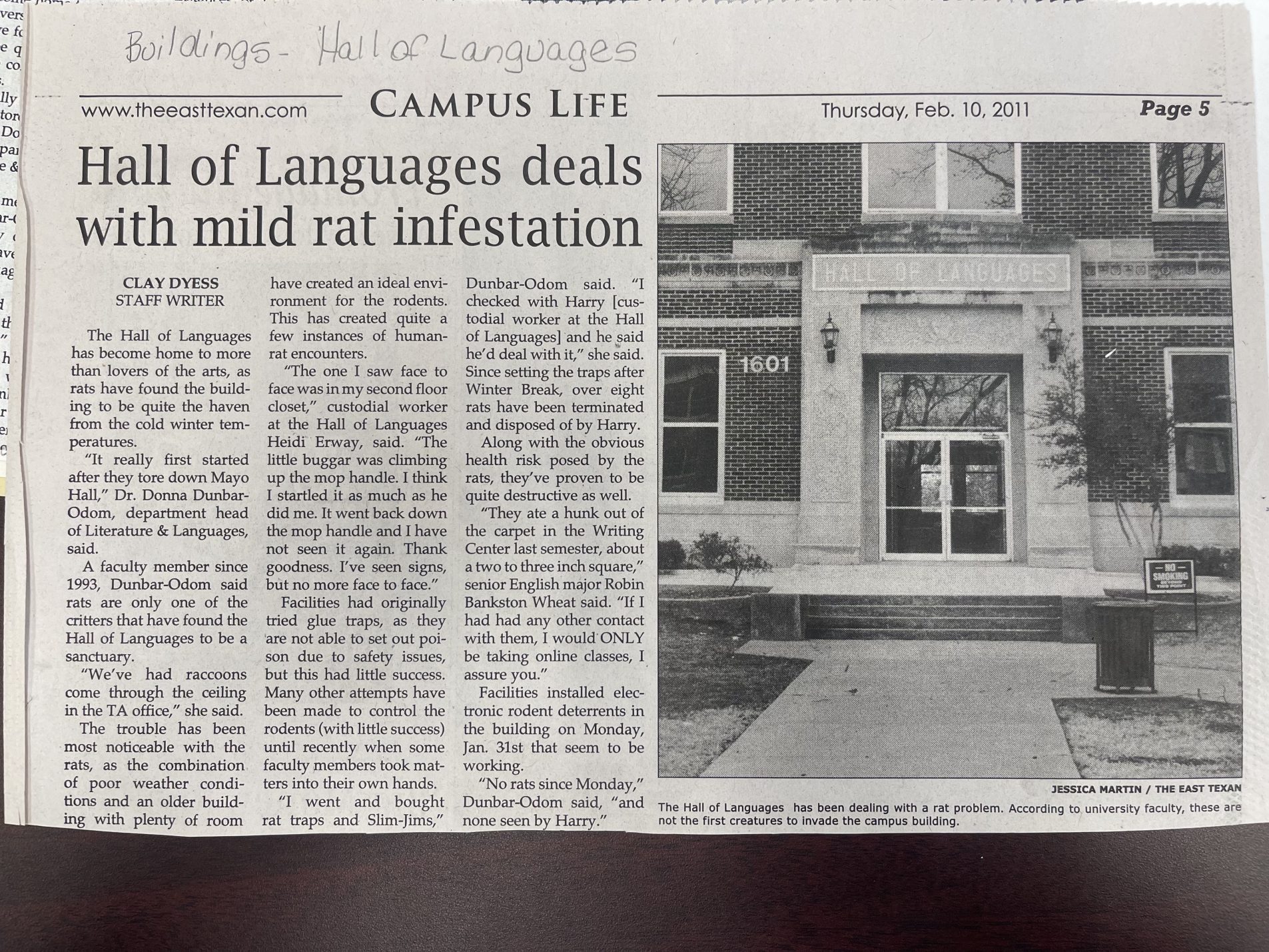
The more entertaining explanation is the rats. In 2008, the university tore down Mayo Hall, an old dorm building across the street from Talbot Hall (where the Welcome Center now stands). Mayo Hall had been empty for several years and housed rodents, raccoons, opossums, cats, and other animals. When Mayo Hall was demolished, those creatures required a new home and naturally migrated to the nearest building: David Talbot Hall.
The memory of this period brought a hearty laugh to Hayes, especially when he said, “Probably the creepiest thing was when we had two raccoons fall through the ceiling and crash onto a graduate assistant's desk while she was sitting there!”
Much like the ghost stories, this event has become a legend in and of itself; I heard four different accounts of the falling raccoons. Talbot Hall's animal infestation took years to control, so Hayes speculates that perhaps what PRINT heard was not ghosts but rather nocturnal critters scurrying in the walls.
Although the building is no longer infested, animals occasionally find a way in. Just a few years ago, Hayes once heard a banging sound in the walls of his office and began to investigate.
“When I looked up at the A/C vent, I saw a little bit of a black wing sticking through the grate. I think it was a bird!”
Although, mysteriously, neither Hayes nor the maintenance employees ever found the creature.
The Mystery and the Magic
Hayes admitted that although he is a man of logic and reason, a part of him also has an open mind. He chuckled as he explained, “I firmly believe in hedging your bets! Should there be spirits, I won't be the one to antagonize them. If they're here, I'd like to think we have a mutually agreeable relationship: we leave each other alone.”
Whether you believe David Talbot Hall is full of wandering spirits or just furry four-legged creatures, it's hard to deny: ghost stories and urban legends are captivating. It's hard not to lean in further and yearn for the spooky details!
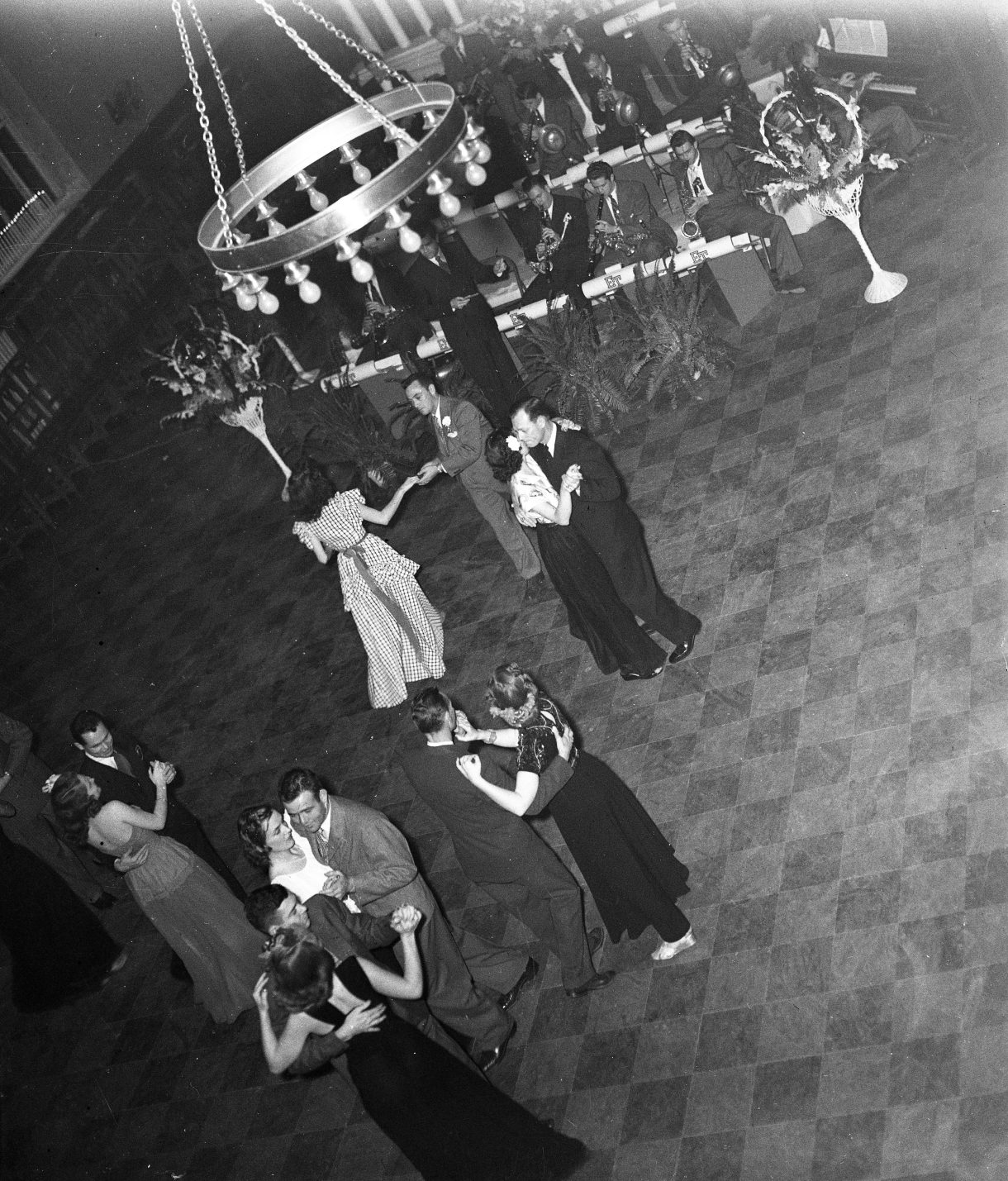
David Talbot Hall is an old building with a rich history. And the ghosts, whether real or not, are a part of that history. They give the building—and our campus—a fun and unique life.
“There are very rational ways to explain certain things,” Hayes said with a smile, “but I like the mystery and the magic, and I kind of hope there's something to create a little spark here.”
Don’t miss out of the rest of our Spooky Stories series in October!
Featured photo: Exterior of David Talbot Hall on a snowy day in the 1930s, located in University Archives
More Spooky Story Series
View All Spooky Story Series
True Crime Meets Academia—Dr. Charles Woods Shares His Research
Part 4 of the Spooky Stories Series Content Warning: Although not described in detail, this article does mention topics of murder and sexual as...
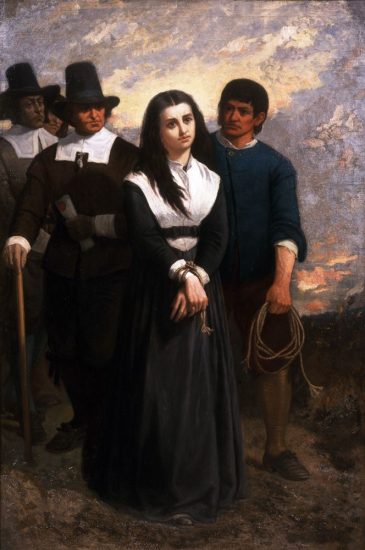
TAMUC History Professor Busts Myths About The Salem Witch Trials
Part 3 of the Spooky Stories Series When we think about the 1692 Salem Witch Trials, we may conjure horrific mental images of women being burned a...

Scary Stories and Staying Power—TAMUC Professor Shines a Spooky Light on a Children’s Horror Classic
Part 1 of the Spooky Story Series For many of us, a childhood rite of passage was to get our hands on a book from Alvin Schwartz's “Scary Stories to Tell in the Dark” series. The spine-c...


